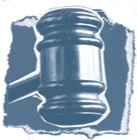
What’s the Issue—Content or Access?
Case: Jon Coy v. Canton City Schools (2002)
Act: using a school computer to access his personal Web site that the school deemed profane
Charge: unauthorized use of school property, online profanity, and disobedience
Jon Coy was 14 years old and in 8th grade at North Canton Middle School in Ohio. In early 2001, he and his friends made a video called “Nothing But Pain” about their exploits that included rollerblading, skateboarding, skits, and daring stunts.
Jon created a Web site to promote his video, and did not name his school or any school official on it. The site contained pictures of Jon and his friends with some biographical information and quotes. It also included a section called “losers” that featured three boys who went to his school, with insults written under each picture. One described a boy as being sexually aroused by his mother, while another displayed a boy giving the “finger.” There was also some profanity and, as the court stated, “a depressingly high number of spelling and grammatical errors.” (Note: This was merely an observation, of course—Jon was not legally judged based on his spelling!)
Like many schools in the United States, North Canton had an Internet policy (an “AUP”) that Jon and his parents signed at the beginning of the school year. The policy authorized acceptable behavior for students using the school’s computers. It prohibited students from hacking into unauthorized computers, Web sites, or information databases, and displaying offensive messages or pictures. Students were warned of disciplinary action for violating the policy.
Word about Jon’s site spread at school and eventually the principal learned of it. However, he didn’t take any action until Jon was caught accessing his Web site from a school computer. Jon was suspended for four days for unauthorized computer use, online profanity, and disobedience. He was also referred to the school superintendent for possible expulsion. The police were notified and Jon and his parents were interviewed at home.
The school district held a hearing and expelled Jon for 80 days. This decision was later modified to allow Jon to continue in school on probation status, but he was restricted from participating in any after-school activities. Jon and his parents disagreed with the school’s response to the Web site and challenged it in court. They claimed that Jon’s freedom of speech was violated and that the school’s Internet policy was vague. The school responded by categorizing his Web site as “lewd and vulgar” and therefore not protected speech. They further stated that Jon was punished for accessing his site at school, not because of the site’s content.

How Would You Decide This Case?
Do you think Jon’s Web site was obscene? Did it cross the line of appropriate expression? Do you think it disrupted any classes or violated anyone’s personal rights? Should the school punish Jon for his sexual comments or calling someone a loser? What about for accessing the site at school, which violated the school’s code of conduct? Was an 80-day probation period a fair consequence or do you think the original four-day suspension was sufficient?

What the Court Decided
The school maintained that the punishment was justified because Jon violated the Internet use policy by accessing his Web site on a school computer. However, it was not clear from the evidence presented to the court whether he was disciplined because of unauthorized access or because of his site’s content. The court stated that if the school disciplined Jon “purely because they did not like what was contained in his personal Web site,” then Jon would win unless the school could show that it caused a disturbance on campus.
The appellate court sent the case back for trial so a jury could decide which was the deciding issue: content or access. On the question of obscene content, the court held that “While somewhat crude and juvenile, the Web site contains no material that could remotely be considered obscene.” Before a jury heard Jon’s case, the parties reached an agreement. The school agreed to remove the incident from Jon’s record and pay him $20,000, part of which paid his legal fees.
How Does This Decision Affect You?
“The First Amendment is there for the minority, not the majority, who will say things that are not politically correct.”
—James Madison, U.S. president, 1809–1817
“I disapprove of what you say, but I will defend to the death your right to say it.”
—Voltaire (18th-century French philosopher)
Courts are not in the business of running schools. They do not want to be involved in the day-to-day affairs of education. Conduct codes spelled out in student handbooks exist for a reason and carry consequences for violation (see chapter 13 for more on this topic). The simple act of accessing an unauthorized Web site may be cause for discipline, regardless of the content of the site. As you see in Jon’s case, there is a difference between content and access. Jon’s school was not able to prove that his punishment was in response solely to unauthorized access, and so Jon won his case. However, he faced distressing consequences along the way—he was suspended, interviewed by police, put on probation status at school, and involved in an extended court battle.
The bottom line: Whether or not you read your school’s code of conduct, it applies to you as a student. Ignorance is not a defense for breaking a rule. It’s safe to assume that personal use of a school’s computer is a violation, and there will likely be penalties—with or without profane content.
What Is Jon Doing Now?
Jon attends Kent State University in Ohio studying English and sociology. He also freelances as a videographer and filmmaker.
In 2008, 21-year-old Jon commented about Internet and cell phone use. He said, “Teens and even younger children need to become aware of the consequences from their improper use. Be careful of what you say and type—if what you’re saying to someone could potentially cause harm or distress, think about holding it back.”
Related Cases
Christopher Bowler v. Hudson High School (Massachusetts, 2004)
In 2004, senior Christopher Bowler started an organization at Hudson High School in Massachusetts “where students could feel comfortable expressing their opinions.” He put up 10 posters at school advertising the first meeting of the Conservative Club. The poster included the address of a Web site that had links to videos of jihadist beheadings of Americans in the Middle East. The school was concerned about exposing its students to such gruesome and graphic images. School officials blocked access to the site and ordered Christopher to take down the posters. He was later allowed to hang the posters with the Web site marked out.
Christopher sued the school district as well as school administrators for violating his First Amendment rights. After three years of litigation, the case was settled on the eve of trial in 2008. The school agreed to amend its policy to forbid censorship of student expression based on political viewpoints. Christopher stated he was “glad that the administration has finally recognized that if this school is going to pride itself on a democratic environment that emphasizes free speech, that includes all viewpoints.” Although this case is about school censorship of political speech, it demonstrates a subtle form of cyberbullying. Displaying a link or reference to violent or threatening material may be used to send bullying messages. In Christopher’s case, the Web site listed on his poster was ruled to be political speech and not cyberbullying, but the distinction was a subtle one. Similar cases might result in a different ruling.
State v. McInerney (California, 2008)
Larry King was 15 and in 8th grade at E.O. Green Junior High in California. He had professed to a friend that he was gay and began cross-dressing and wearing makeup to class. Larry was bullied at school, and some of his teachers tried to help him. Girls at school used cell phones to take his picture when he dressed up, and they shared the photos online with classmates.
Larry had allegedly embarrassed 14-year-old classmate Brandon McInerney by flirting with him at school. One day, while in class, Brandon stood up, pointed a gun at Larry, and shot him twice. Larry died two days later. Brandon was arrested and charged with first-degree murder and committing a hate crime. Tried as an adult, Brandon faces the possibility of life in prison. The decision remains pending at the time of this book’s publication.
On the one-year anniversary of the shooting, February 12, 2009, the U.S. Congress filed a Resolution calling for education to help students respect each other’s differences and for laws against name-calling and bullying.
Things to Think About
Are you aware of the debate about Internet and cell phone access at school? Do you know what your school rules are? School officials work toward a balance of respecting your rights and maintaining a safe educational environment without disruption. In your opinion, are your school’s rules reasonable, or should students be trusted to decide what’s “acceptable use” on campus? Do you agree with your school’s restrictions on accessing unauthorized Web sites? Why or why not?
Chapter 8: Further Reading and Resources
CyberMentors • www.cybermentors.org.uk
The CyberMentors organization was launched in England in 2009. Several hundred specially trained teens stand ready to help their peers online.
Cybersmart • www.cybersmart.gov.au
The Cybersmart program is a national cybersafety education program in Australia. In 2009, the site launched the comprehensive classroom resource “Let’s Fight It Together,” which includes a DVD, tips, and lesson plans.
Internet Crime Complaint Center • www.ic3.gov
Have you or someone you know been a victim of an Internet related crime? File a complaint at this government Web site, a collaborative effort with the FBI. After being reviewed, complaints are referred to law enforcement agencies.
SchoolTipline • www.schooltipline.com
If your school has this service, you can anonymously report bullying, sexual harassment, vandalism, discrimination, and drug use at school. It’s available 24/7 and designated school officials receive your report immediately.
Teens Against Bullying • www.teensagainstbullying.org
Sponsored by the Pacer Center in Minneapolis, Minnesota, this edgy educational resource is designed to empower teens in dealing with bullying situations.
Calvert, Clay. “Off-Campus Speech, On-Campus Punishment: Censorship of the Emerging Internet Underground.” Boston University Journal of Science and Technology Law 7, no. 2 (2001): 244–285.
Rutherford, Sally. “Kids Surfing the Net at School: What Are the Legal Issues?” Rutgers Computer and Technology Law Journal 24, no. 2 (1998): 417–451.
